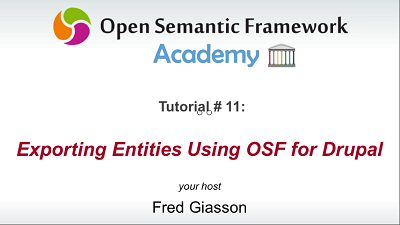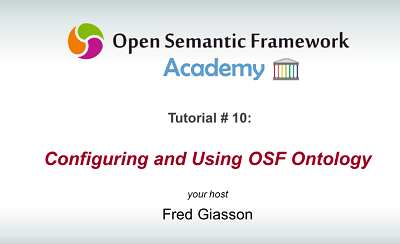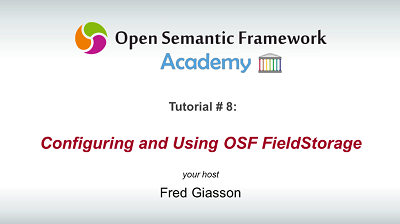With this screencast, you will see how you can update all the pieces that compose the Open Semantic Framework (OSF) stack. You will discover all the tools that are available to you to update the different programs. You will be able to update the following applications with the latest release or development code:
- OSF Installer
- OSF Web Services
- OSF for Drupal
- OSF Web Services PHP API
- OSF Tests Suites
- Datasets Management Tool
- Permissions Management Tool
- Ontologies Management Tool
Here is the list of commands that have been run in this screencast:
[cc lang=’bash’ line_numbers=’false’]
; Upgrade Ubuntu
apt-get update
apt-get upgrade
; Upgrade the OSF Installer script
cd /usr/share/osf-installer
rm upgrade.sh
wget https://raw.githubusercontent.com/structureddynamics/Open-Semantic-Framework-Installer/3.0/upgrade.sh
chmod 755 upgrade.sh
./upgrade.sh
; Upgrade the OSF Web Services PHP API
./osf-installer –upgrade-osf-ws-php-api=”3.0″
; Upgrade the OSF
./osf-installer –upgrade-osf-web-services-code-base
; Upgrade the Datasets Management Tool
./osf-installer –upgrade-osf-datasets-management-tool=”3.0″
; Upgrade the Ontologies Management Tool
./osf-installer –upgrade-osf-ontologies-management-tool=”3.0″
; Upgrade the Permissions Management Tool
./osf-installer –upgrade-osf-permissions-management-tool=”3.0″
; Upgrade OSF for Drupal
cd /usr/share/drupal/
drush dl osf-7.x-3.x-dev -y
drush cc all
; Upgrade to a specific version of Drupal
drush pm-update projects drupal-7.26
[/cc]




